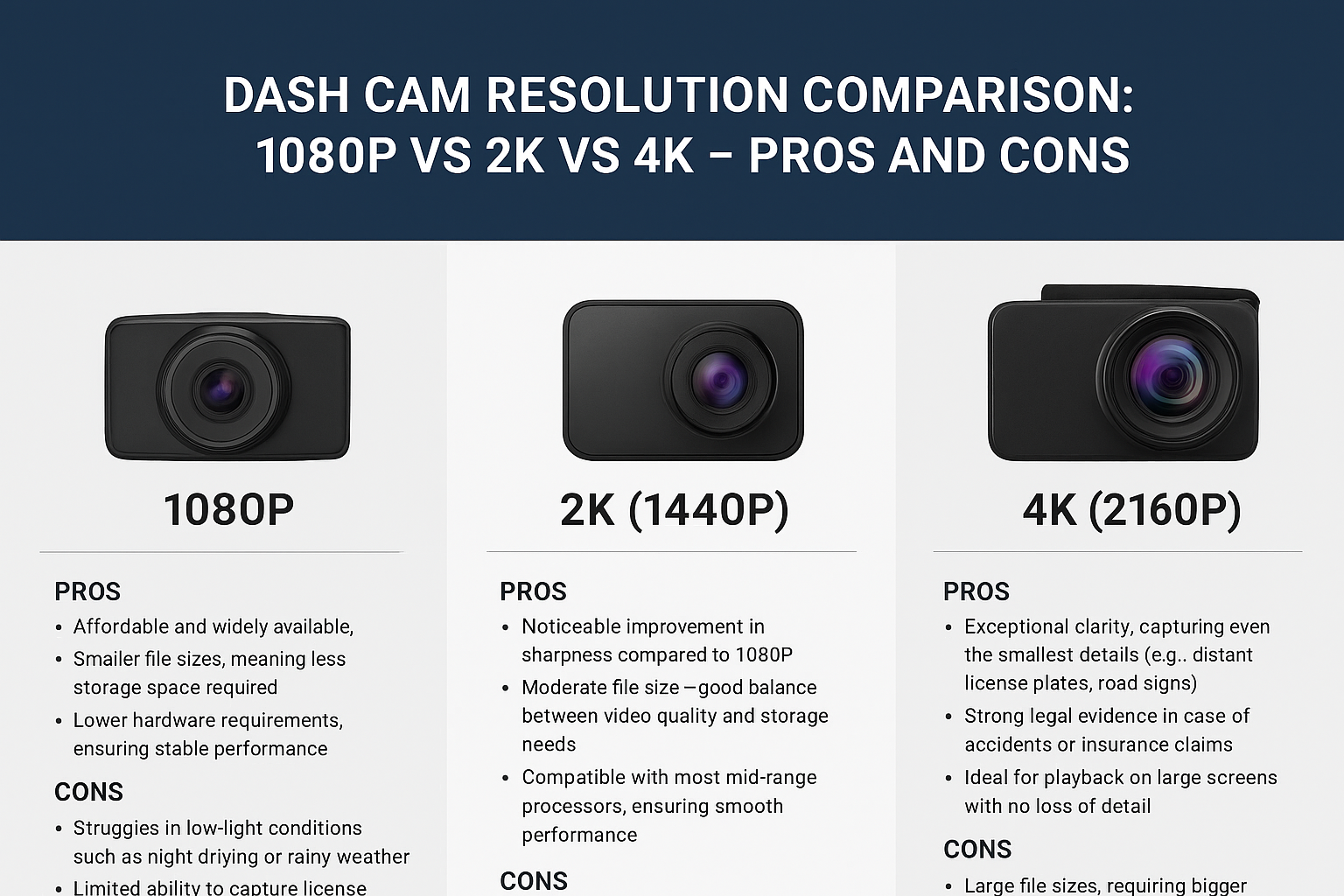In today’s era of smart driving, dash cams are no longer just tools for recording accidents—they are evolving into intelligent safety devices when combined with Advanced Driver Assistance Systems (ADAS). So, how exactly does the integration of dash cams and ADAS improve driving safety and the overall driving experience?
What is ADAS?
ADAS (Advanced Driver Assistance System) refers to a collection of safety technologies that use cameras, sensors, and algorithms to help drivers avoid accidents. Common ADAS features include:
-
Lane Departure Warning (LDW): Alerts drivers when the vehicle unintentionally drifts out of its lane.
-
Forward Collision Warning (FCW): Detects vehicles ahead to prevent rear-end collisions.
-
Pedestrian & Object Detection: Identifies people or obstacles in front of the vehicle and issues warnings.
-
Blind Spot Monitoring: Helps drivers notice vehicles approaching from hard-to-see areas.
The core purpose of ADAS is to reduce driver reaction delays by monitoring the road in real-time and minimizing the risk of accidents.
How Dash Cams and ADAS Work Together
Traditional dash cams mainly focus on video recording, while ADAS provides real-time predictive assistance. When combined, they form a complete safety loop of “preventive alerts + reliable evidence”:
-
Accident Prevention in Real Time
-
Dash cams act as the “eyes” of ADAS by capturing road footage and enabling algorithms to detect risks.
-
For example, when the system senses lane drifting, ADAS immediately alerts the driver to take corrective action.
-
-
Clearer Evidence in Case of Accidents
-
If a collision occurs, dash cams store the incident footage, while ADAS logs warnings and driver responses—offering a fuller picture of what actually happened.
-
-
Improved Driving Habits
-
Some advanced dash cams integrated with ADAS can monitor behaviors such as hard braking, sudden acceleration, or frequent lane departures, encouraging safer long-term driving habits.
-
Why the Integration is More Effective
-
Complete Safety Coverage: ADAS prevents accidents, while dash cams document incidents—eliminating the shortcomings of having only one of the two.
-
Reduced Human Error: When drivers are distracted, ADAS reacts instantly, and if an accident is unavoidable, dash cam footage provides critical evidence.
-
Technology Evolution: With advancements in AI algorithms and ultra-clear imaging, the combination of dash cams and ADAS enables higher precision in both detection and recording.
The Smart Advantage of DRIVEYE D7 Pro
Take the DRIVEYE D7 Pro as an example—it combines 4K UHD front recording with 1080P rear coverage, while integrating powerful ADAS features:
-
Lane Departure Warning (LDW): Reduces risks during highway or long-distance driving.
-
Forward Collision Warning (FCW): Helps prevent rear-end accidents.
-
Blind Spot Monitoring: Provides greater awareness when changing lanes.
-
Parking Surveillance Mode: Keeps monitoring your vehicle even when the engine is off.
With this combination, the D7 Pro transforms from a passive recording tool into an active safety assistant, always working to protect both drivers and passengers.
Conclusion
The integration of dash cams and ADAS represents the future of smart driving technology. Not only does it improve safety, but it also enhances the driving experience. As technology continues to evolve, more intelligent safety features will become accessible to everyday drivers.
If you’re looking for a dash cam that offers both ultra-clear recording and smart safety features, the DRIVEYE D7 Pro is a reliable choice.





Leave a comment
This site is protected by hCaptcha and the hCaptcha Privacy Policy and Terms of Service apply.